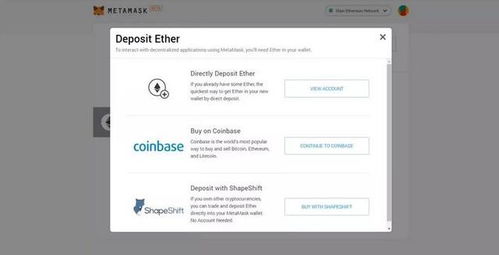亲爱的编程爱好者们,你是否曾想过,用Java语言来生成一个以太坊HD钱包?这听起来是不是有点酷炫?今天,我就要带你一起探索这个有趣的话题,让你了解如何用Java来创建一个以太坊HD钱包,让你的区块链之旅更加丰富多彩。

首先,让我们来了解一下什么是以太坊HD钱包。HD(Hierarchical Deterministic)钱包是一种生成密钥的方式,它允许你从一个主密钥生成无限数量的子密钥。这意味着,你可以从一个钱包地址生成多个地址,而不需要记住所有的私钥。以太坊HD钱包就是基于这种原理,让你可以安全地管理你的以太币。

选择Java来生成以太坊HD钱包,原因有很多。Java是一种广泛使用的编程语言,拥有庞大的开发者社区和丰富的库资源。此外,Java的跨平台特性使得你的钱包可以在不同的操作系统上运行,这无疑增加了其可用性。

在开始之前,你需要做一些准备工作。首先,确保你的开发环境已经安装了Java开发工具包(JDK)。你可以使用Maven或Gradle来管理项目依赖。接下来,让我们看看如何使用Java生成以太坊HD钱包。
为了生成以太坊HD钱包,我们需要遵循BIP39和BIP32标准。BIP39定义了一个生成随机种子和助记词的算法,而BIP32则定义了如何从一个主密钥生成子密钥。
首先,我们需要生成一个随机种子。在Java中,我们可以使用`SecureRandom`类来生成随机数。以下是一个简单的示例:
```java
import java.security.SecureRandom;
public class WalletGenerator {
public static void main(String[] args) {
SecureRandom random = new SecureRandom();
byte[] seed = new byte[32];
random.nextBytes(seed);
// 将种子转换为十六进制字符串
String seedHex = bytesToHex(seed);
System.out.println(\Seed: \ + seedHex);
}
private static String bytesToHex(byte[] bytes) {
StringBuilder hexString = new StringBuilder(2 bytes.length);
for (byte b : bytes) {
String hex = Integer.toHexString(0xff & b);
if (hex.length() == 1) {
hexString.append('0');
}
hexString.append(hex);
}
return hexString.toString();
}
接下来,我们需要使用BIP32算法来生成主密钥。这可以通过使用Bouncy Castle库来实现。以下是一个简单的示例:
```java
import org.bouncycastle.crypto.AsymmetricCipherKeyPair;
import org.bouncycastle.crypto.generators.ECKeyPairGenerator;
import org.bouncycastle.crypto.params.ECKeyGenerationParameters;
import org.bouncycastle.crypto.params.ECPrivateKeyParameters;
import org.bouncycastle.crypto.params.ECPublicKeyParameters;
import org.bouncycastle.math.ec.ECPoint;
import org.bouncycastle.math.ec.ECFieldElement;
public class WalletGenerator {
public static void main(String[] args) {
// 初始化EC密钥对生成器
ECKeyPairGenerator generator = new ECKeyPairGenerator();
ECKeyGenerationParameters params = new ECKeyGenerationParameters(
new org.bouncycastle.math.ec.ECNamedCurveTable().getByName(\secp256k1\),
new SecureRandom()
);
generator.init(params);
// 生成密钥对
AsymmetricCipherKeyPair keyPair = generator.generateKeyPair();
ECPrivateKeyParameters privateKey = (ECPrivateKeyParameters) keyPair.getPrivate();
ECPublicKeyParameters publicKey = (ECPublicKeyParameters) keyPair.getPublic();
// 获取公钥和私钥的坐标
ECPoint publicKeyPoint = publicKey.getQ();
ECFieldElement x = publicKeyPoint.getX();
ECFieldElement y = publicKeyPoint.getY();
// 将坐标转换为十六进制字符串
String publicKeyHex = x.toBigInteger().toString(16) + y.toBigInteger().toString(16);
String privateKeyHex = privateKey.getD().toBigInteger().toString(16);
System.out.println(\Public Key: \ + publicKeyHex);
System.out.println(\Private Key: \ + privateKeyHex);
}
一旦我们有了主密钥,我们就可以使用BIP32算法来生成子密钥。这可以通过使用Bouncy Castle库中的`ECKeyPairGenerator`来实现。以下是一个简单的示例:
```java
import org.bouncycastle.crypto.AsymmetricCipherKeyPair;
import org.bouncycastle.crypto.generators.ECKeyPairGenerator;
import org.bouncycastle.crypto.params.ECKeyGenerationParameters;
import org.bouncycastle.crypto.params.ECPrivateKeyParameters;
import org.b